Description
Are physics numericals a roadblock in your Class 12 board exam preparation? Do you struggle to apply theoretical concepts to practical problems? “Mastering Physics Numericals” is your definitive solution, meticulously crafted for students appearing for the CBSE and ISC Class 12 examinations.
This ebook goes beyond rote learning, offering a unique approach that breaks down complex numerical problems into manageable steps. Inside, you’ll find:
- Chapter-wise Coverage: Aligned perfectly with the latest CBSE and ISC syllabi, ensuring you cover every essential topic.
- Step-by-Step Solutions: Each numerical problem is solved with clear, detailed explanations, demystifying the process and helping you understand the underlying physics principles.
- Conceptual Clarity: We don’t just give answers; we help you build a strong conceptual foundation, empowering you to tackle variations of problems with ease.
- Variety of Problems: A wide range of problems, from basic to advanced, designed to challenge and strengthen your problem-solving skills.
- Tips and Tricks: Practical strategies and shortcuts to approach different types of numerical efficiently and avoid common pitfalls.
- Practice Questions: Ample practice questions (with solutions provided separately for self-assessment) to reinforce your learning and build confidence.
- Exam-Oriented Approach: Specifically designed to prepare you for the types of numerical questions frequently asked in CBSE and ISC board examinations.
You’re right to point out that “Class 12” is a broad term, and both CBSE and ISC boards have specific syllabi. My previous Table of Contents was a comprehensive overview that aimed to cover most common topics, but for a truly effective “Mastering Physics Numericals” book, it’s crucial to align it as closely as possible with the current syllabi for the 2024-25 academic year.
Based on the latest CBSE and ISC Class 12 Physics syllabi, here’s a revised and more accurate Table of Contents, highlighting the key units and chapters where numerical problems are prominent. I’ve also noted some key differences or emphasis for each board where applicable.
Table of Contents: Mastering Physics Numericals (CBSE & ISC Class 12)
Part I: Electrostatics & Current Electricity
- Chapter 1: Electric Charges and Fields
- 1.1 Coulomb’s Law and Superposition Principle
- 1.2 Electric Field due to Point Charges and Dipoles
- 1.3 Electric Flux and Gauss’s Theorem Applications (e.g., infinite wire, plane sheet, spherical shell)
- Chapter 2: Electrostatic Potential and Capacitance
- 2.1 Electric Potential and Potential Energy (due to point charge, dipole, system of charges)
- 2.2 Capacitors and Capacitance (Parallel Plate Capacitor, combinations in series and parallel)
- 2.3 Energy Stored in a Capacitor (Formulae only for CBSE, derivations may be relevant for ISC)
- Chapter 3: Current Electricity
- 3.1 Ohm’s Law, Resistance, Resistivity, Conductivity, and Temperature Dependence
- 3.2 Drift Velocity and Mobility
- 3.3 Internal Resistance of a Cell, EMF, and Terminal Potential Difference
- 3.4 Combination of Cells (Series and Parallel)
- 3.5 Kirchhoff’s Laws (Numerical applications for complex circuits)
- 3.6 Wheatstone Bridge and Meter Bridge (ISC may have more detailed problems on Meter Bridge and Potentiometer)
- 3.7 Potentiometer and its Applications (Comparison of EMF, Internal Resistance – more prominent in ISC)
Part II: Magnetism & Electromagnetic Phenomena
- Chapter 4: Moving Charges and Magnetism
- 4.1 Biot-Savart Law and its Applications (e.g., current loop, straight wire)
- 4.2 Ampere’s Circuital Law and its Applications (e.g., solenoid, toroid)
- 4.3 Force on a Current-Carrying Conductor in a Magnetic Field
- 4.4 Force between Two Parallel Current-Carrying Conductors
- 4.5 Torque on a Current Loop in a Uniform Magnetic Field
- 4.6 Moving Coil Galvanometer (Conversion to Ammeter and Voltmeter)
- Chapter 5: Magnetism and Matter
- 5.1 Bar Magnet as an Equivalent Solenoid
- 5.2 Earth’s Magnetic Field and Magnetic Elements (Numerical problems on dip, declination, horizontal component)
- 5.3 Magnetic Properties of Materials (Qualitative understanding for numerical context)
- Chapter 6: Electromagnetic Induction
- 6.1 Faraday’s Laws of Electromagnetic Induction and Lenz’s Law
- 6.2 Motional EMF and Induced Current
- 6.3 Self-Inductance and Mutual Inductance (Numerical problems on coils, solenoids)
- 6.4 Eddy Currents (Qualitative)
- Chapter 7: Alternating Current
- 7.1 AC Voltage and Current: Peak, RMS, Average Values
- 7.2 Reactance and Impedance (R, L, C circuits)
- 7.3 Series LCR Circuit: Phasor Diagrams, Resonance
- 7.4 Power in AC Circuits: Power Factor, Wattless Current
- 7.5 Transformers (Numerical problems on turns ratio, efficiency)
Whether you’re aiming for a perfect score or simply want to overcome your fear of physics numerical, “Mastering Physics Numerical” will be your trusted companion. Invest in your success and transform your understanding of physics!
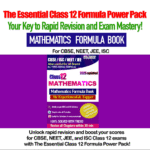

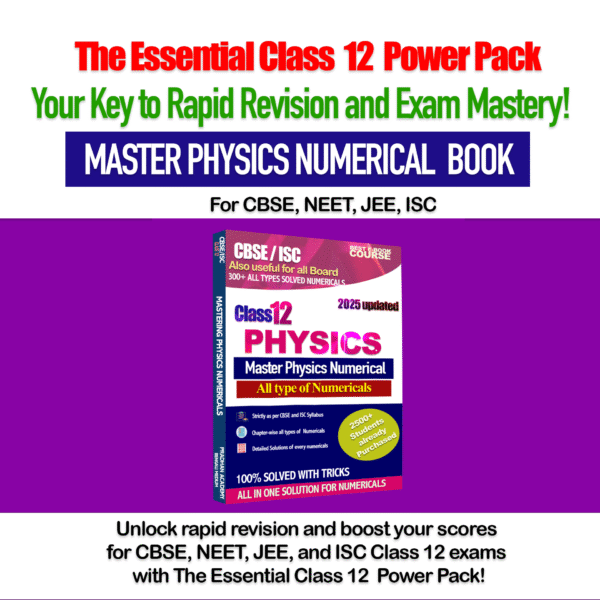
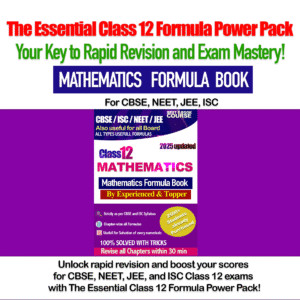

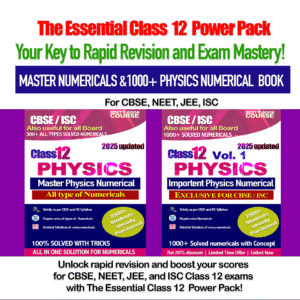
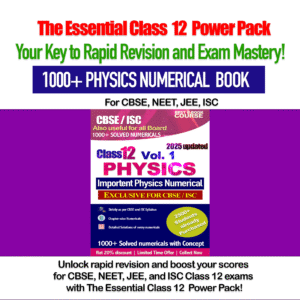
Reviews
There are no reviews yet.